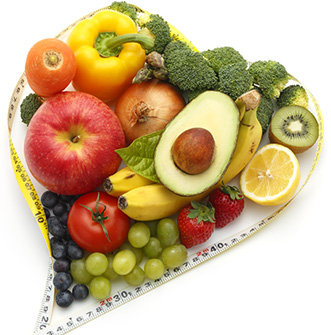 February is American Heart Month, the perfect time to give yourself some “TLC” and take your cardiovascular health to heart. One simple step? Follow a heart-healthy diet.
February is American Heart Month, the perfect time to give yourself some “TLC” and take your cardiovascular health to heart. One simple step? Follow a heart-healthy diet.
You can minimize risks associated with cardiovascular disease (CVD), the leading cause of death and disability among U.S. adults, by making easy changes to your eating style.
These easy changes can include things like choosing fresher, whole food ingredients or being more careful when dining out. It doesn’t mean treats are never allowed, either! Overall, it is the collective pattern of your lifestyle and dietary choices that will make the largest impact on the long-term health status of your heart.
If you’re already dealing with health issues like diabetes or have experienced heart failure, you’ll need a little extra care in revising your lifestyle and medical plan. Still, The American Heart Association (AHA) publishes dietary recommendations that are suitable for most people over 2 years old.
A heart healthy diet is one the most accessible ways to reduce your risks of serious disease and disability—and do so, deliciously!
You won’t find much that is completely forbidden for those eating heart-healthy. Look at the list below and imagine all you can enjoy from a bounty of ingredients. And check back in our next edition, where we will feature a special recipe for a heart healthy meal you’ll love!
AHA Dietary Recommendations
- Colorful fruits and vegetables. Eat a variety of servings each day, especially bright and dark colors: green, orange, yellow and red. Examples: spinach, chard, bell peppers, berries, pumpkin.
- Fish, especially oily/fatty fish containing omega-3 fatty acids. Eat a serving at least twice a week. Examples: salmon, tuna, herring, sardines, mackerel.
- Whole grain foods. Eat a variety every day to include high-fiber, nutrient-dense, whole grain products. Examples: oats, brown rice, 100% whole wheat.
- Lean meats and alternative such as nuts, beans or tofu. Limit the amount of saturated fat you eat each week, including in meat servings. Replace marbled red meat with less fatty cuts, and choose poultry, fish, beans, nuts and organic sprouted tofu as other protein options.
- Polyunsaturated or monounsaturated fats. Choose unsaturated fat such as olive oil to replace saturated fats as in butter.
- Strictly limit the amount of trans fats you eat. Trans fats unfavorably raise the “bad” cholesterol in the blood stream and lower the “good” cholesterol. You’ll find it most often in processed foods made with partially hydrogenated or hydrogenated vegetable oil, vegetable shortening, or margarine. Examples (to avoid): cookies, crackers, chips.
- Limit sodium. 2300 mg per day is the limit for those with no other risk factors. That is about a teaspoon of table salt. If you have diabetes, kidney disease, are over 50 or are African-American, you’re recommended limit is 1500 mg.
- Limit alcohol intake. The heart healthy diet suggests no more than 2 drinks a day for men and 1 drink a day for women.
- Limit added sugar. The heart healthy diet suggests you limit your intake of drinks and foods with added sugar as much as possible.


